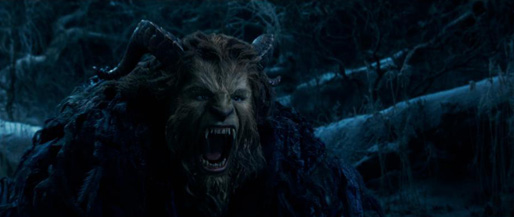|
|
Movie Review: Beauty and the BeastBy Ben GruchowMarch 24, 2017
All of this is wrapped up with a desire on the part of the storytellers in both iterations of the film to explore the different forms a monstrous nature can take, via growing humanity in a nonhuman, outwardly undesirable form and receding humanity in an outwardly desirable form. In the 1991 film, it was also something more than that: an animated feature that told a love story from a relatively adult perspective. We can abstain from examining the unpleasant implications of the way that love story formulates; it’s been well-examined by this point already, and this iteration does nothing to fundamentally change it. The original 1991 animated film, you’ll recall, was right around 80 minutes long sans end credits. What’s done here is something of an unwelcome magic trick: how to add 40 minutes of inconsequential footage to a story and make the thing feel somehow choppier and slighter. The explanation behind this feeling, I think, is that this film is more interested in showing off Moments from the original, and less interested in the connective tissue in between those moments, or in even stitching the moments themselves together with much in the way of flow. That showcase of Moments forms the ultimate in feeding audience nostalgia with an inferior photocopy. Did you treasure the iconic ballroom-dancing scene in the 1991 film, which showed off the Disney animators’ command of the revolutionary CAPS capabilities (even if it never quite reconciled the difference between a three-dimensional backdrops and two-dimensional participants)? Well, here’s the same thing again, except in live-action and incapable of the same dreamlike feeling of fluidity.
|

|
|
|

|
Friday, November 1, 2024
© 2024 Box Office Prophets, a division of One Of Us, Inc.


